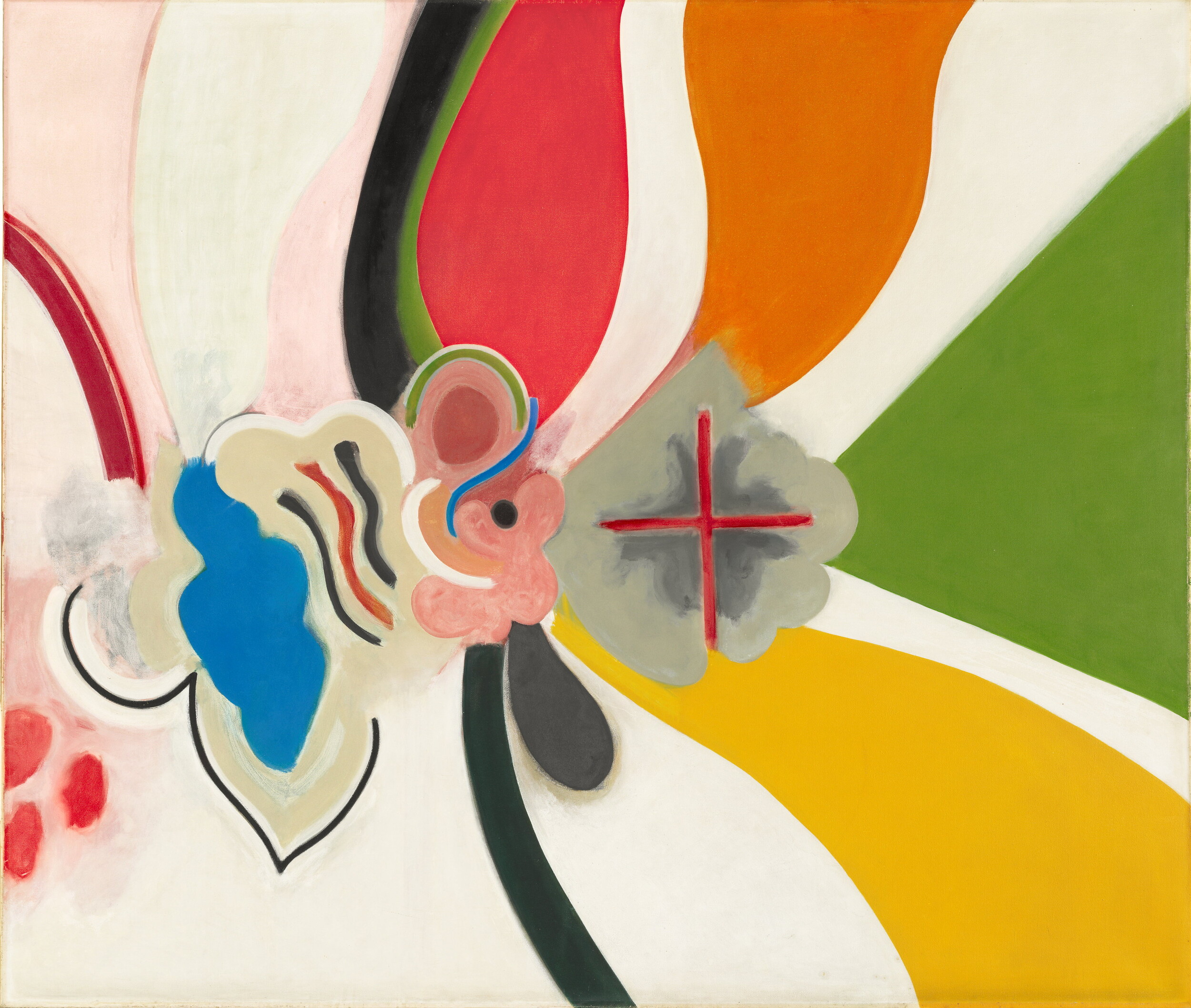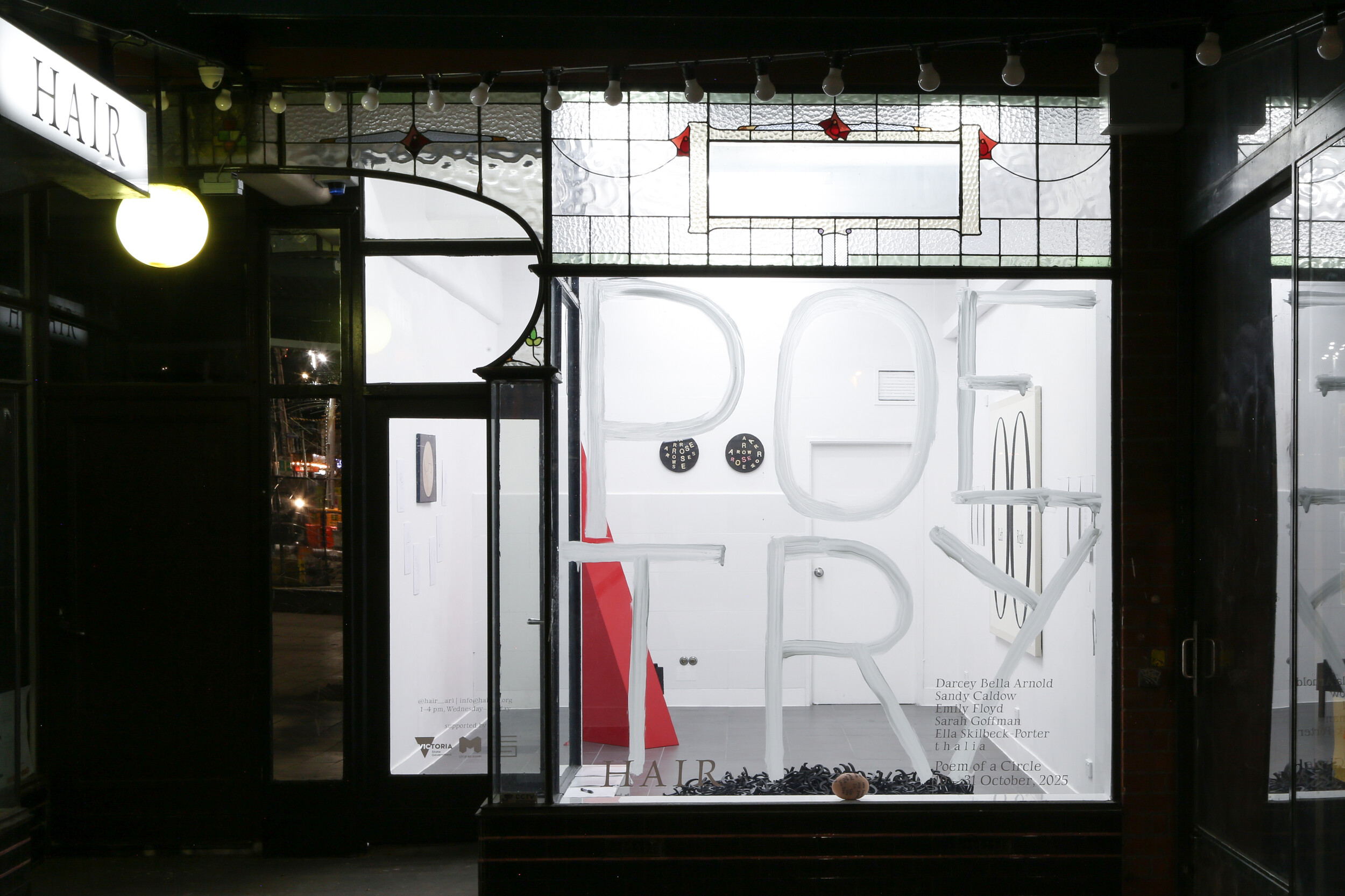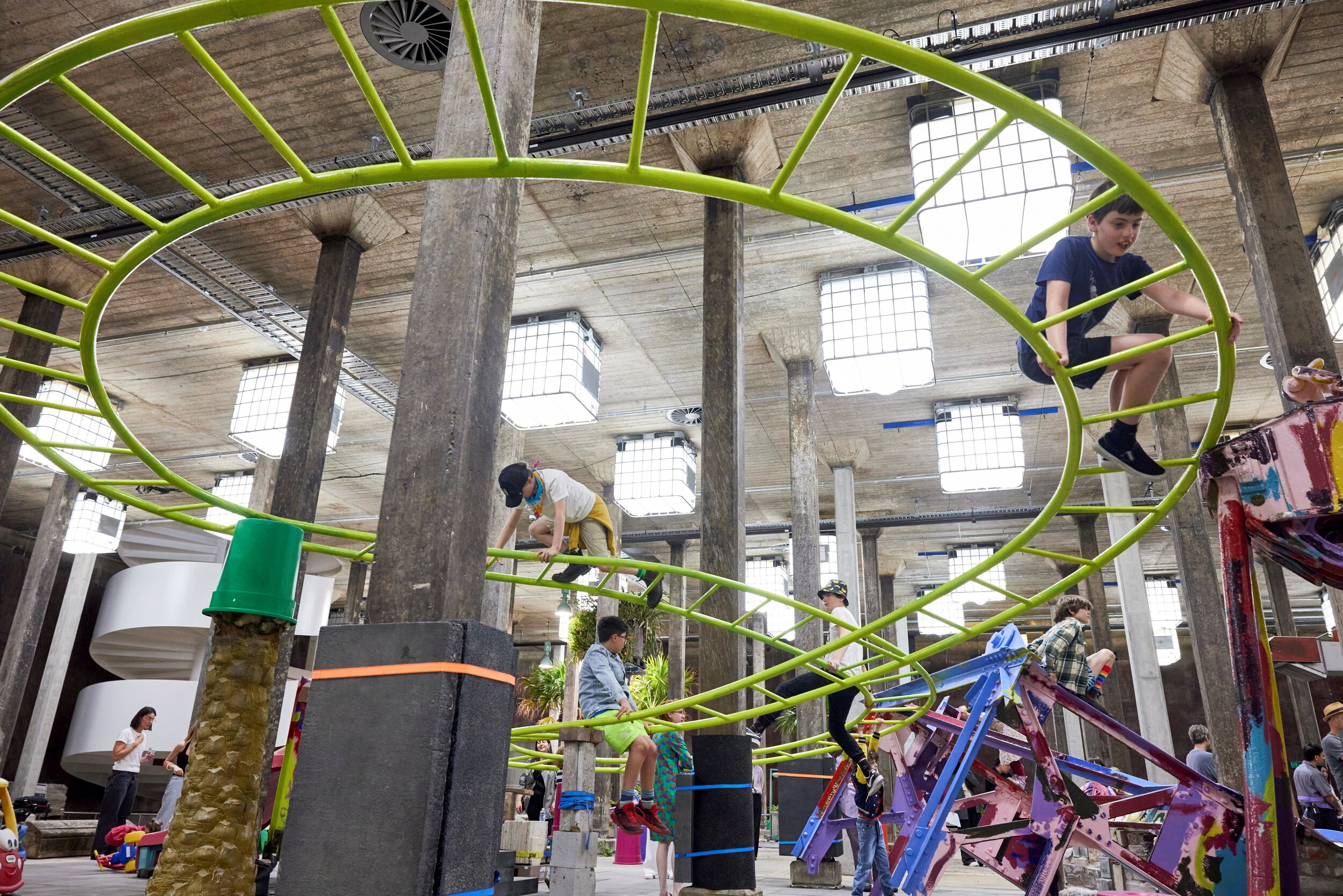Installation view of Tina Stefanou: You Can’t See Speed, Australian Centre for Contemporary Art, Melbourne, 2025. Courtesy the artists. Photo: Andrew Curtis
Tina Stefanou: You Can’t See Speed
Art Writing and Criticism Students, Amy Stuart and Chelsea Hopper
How to write a review of an exhibition so intentionally fragmented, concerned with multiple viewpoints, and near impossible to experience in its entirety? Naturally, by enlisting an entire class of Monash art theory students and two tutors to cobble together a collective, hive-mind response, the results of which we present here. With dozens of eyeballs, multiple brains, and various bodies, we entered Tina Stefanou’s solo exhibition, You Can’t See Speed, currently showing at the Australian Centre for Contemporary Art. We are immediately immersed in the sea of heterogeneous, cacophonous, and booming sound that is fundamental to the experience of the entire show.
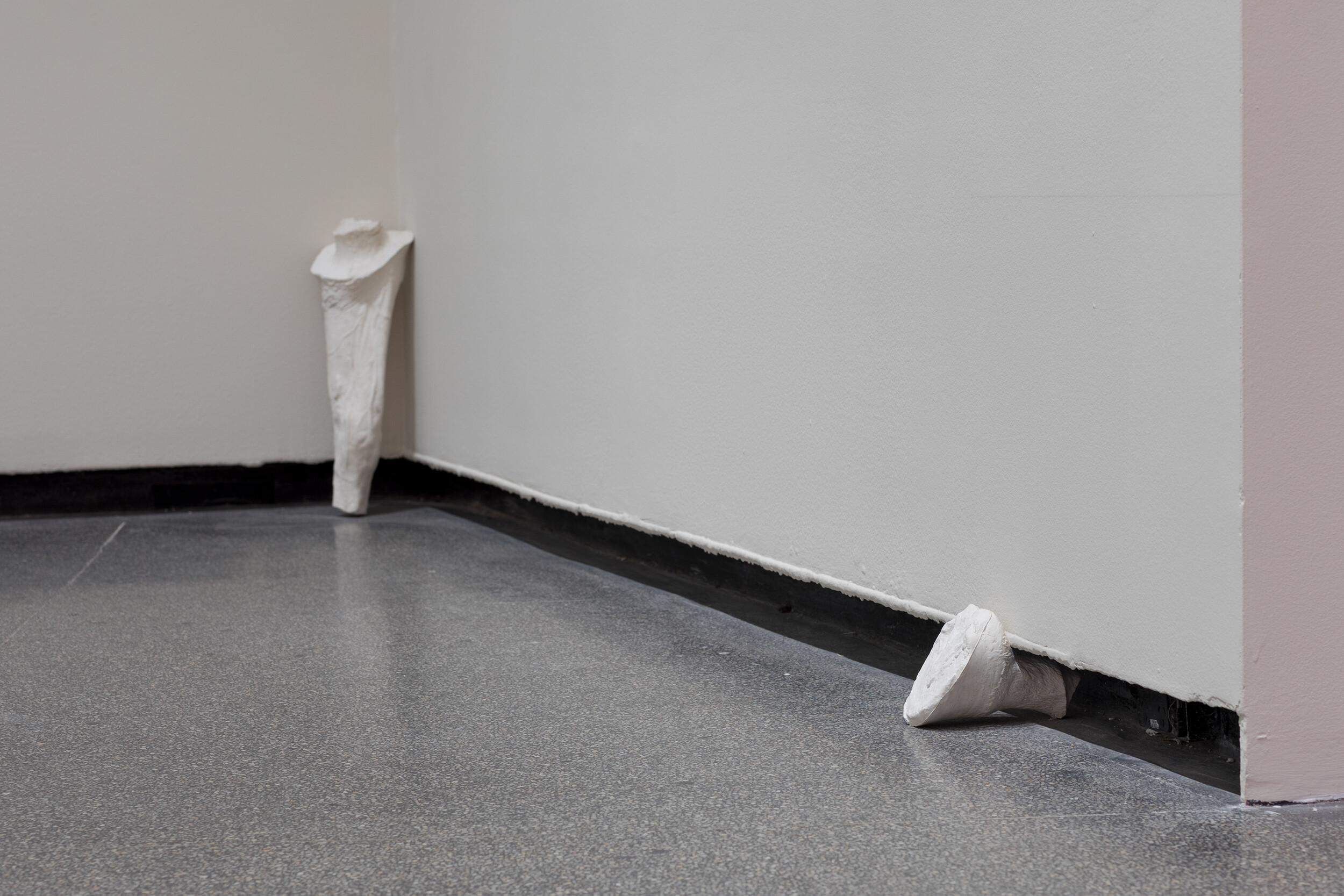
Tina Stefanou, From the Hooves Up, Breeze Embedded 2025 (detail), Australian Centre for Contemporary Art, Melbourne. Courtesy the artists. Photo: Andrew Curtis
Walking through ACCA’s foyer into the gallery on the left, we first encounter a sparse sculptural installation, From the Hooves Up, Breeze Embedded (2025). Life-sized wax and plaster casts of disembodied horse hooves and leg-segments emerge from the walls and ceiling; they are propped up against the gallery walls or poking out of them. Breeze, we learn, is a horse with which Stefanou has been working as a “long term collaborator,” alongside many such other collaborators, human and non-human alike.
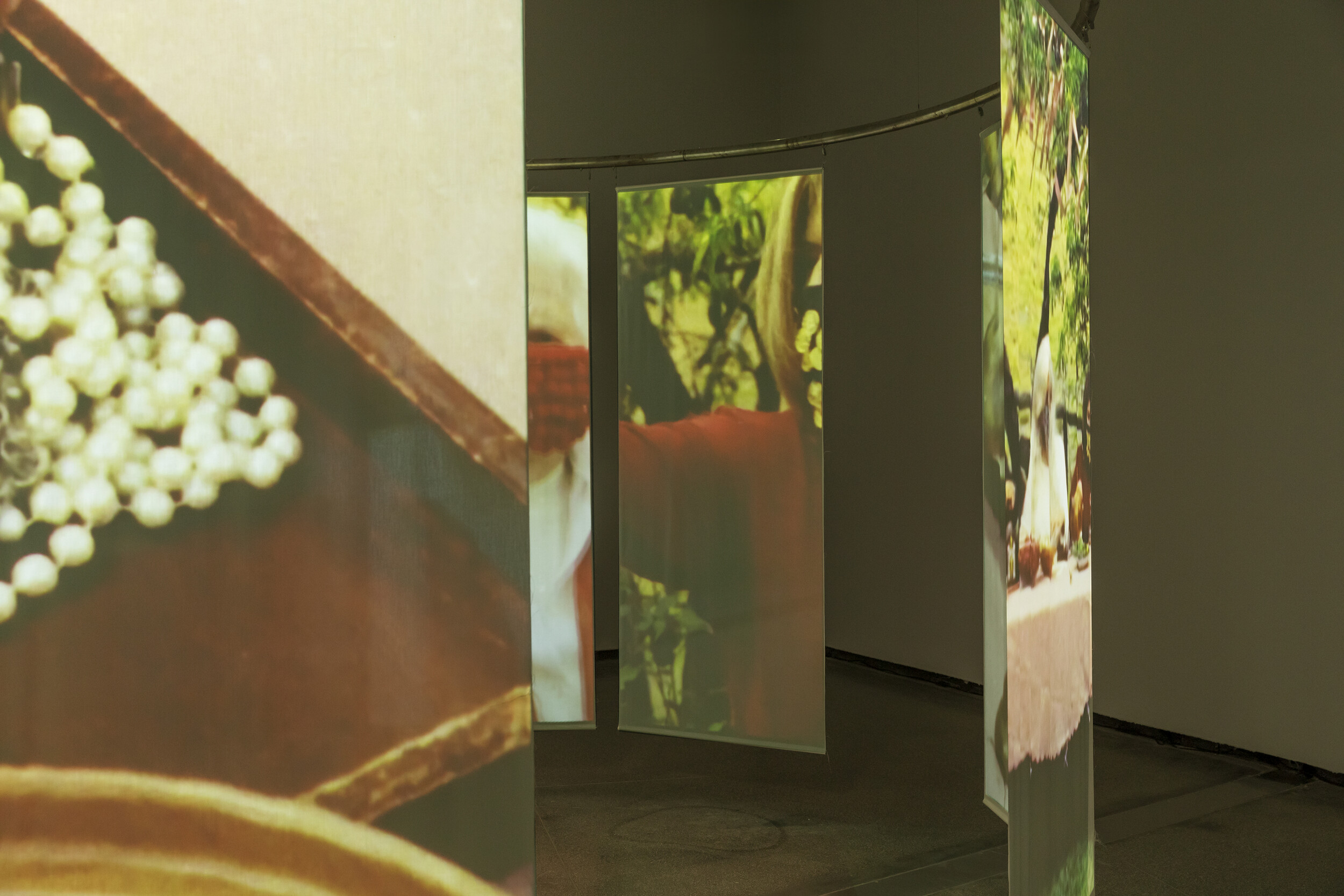
Tina Stefanou, Field of Triggers: Agritemple 2025 (detail), Australian Centre for Contemporary Art, Melbourne. Courtesy the artists. Photo: Andrew Curtis
From here, we move towards a series of hanging projector screens—each a long segment of fabric suspended from a single circular metal support. Walking through gaps between each segment, this arrangement lets us view the projected video works from both inside and outside the circular space, all the while immersed in a polyphonic choral soundtrack. Titled Field of Triggers: Agritemple and dated 2025, the installation incorporates a number of Stefanou’s earlier videos, including There is a Dead Rabbit Under the Greek Family Unit (2022) and The Ball (2023), which are projected in segments onto the screens. Stefanou’s position as a working-class, Greek diasporic artist informs the entirety of the exhibition, and in addition to regularly working with non-human collaborators, she frequently enlists the help of her family to execute artworks. Her family’s contribution to her practice is particularly explicit in the former 16-mm film video, where we watch deft hands gut and skin two wild rabbits from Wattle Glen. This is accompanied by the requisite gore, though occasionally blood and entrails transmute into red glitter and strings of pearls being lifted from the carcass. Stefanou has recruited a number of family members here (the credits list Grandma, Mum, Dad, Aunty Mary, and so on), who, in another surreal scene, sit down around an outside dining table wearing ornamented facemasks and each animating a small percussive instrument.
Indeed, collaboration is crucial to Stefanou’s artistic process—one look at the exhibition’s dense, sprawling online catalogue shows the scores of people, organisations, communities, creatures, and other entities involved in realising the works for You Can’t See Speed. A dedicated wall of a somewhat absurdly long list of names also acts as a gesture of acknowledgment ranging from materials (aluminium steel) to animals (rainbow fish), to writers of the exhibition’s catalogue and ACCA’s own staff, all contributing in some way to the exhibition. This collaborative approach informs both Stefanou’s methodology and the content of many of the videos exhibited here. In the exhibition text, it is described as a method of co-creation drawn from ethnographic research and socially-engaged practice.
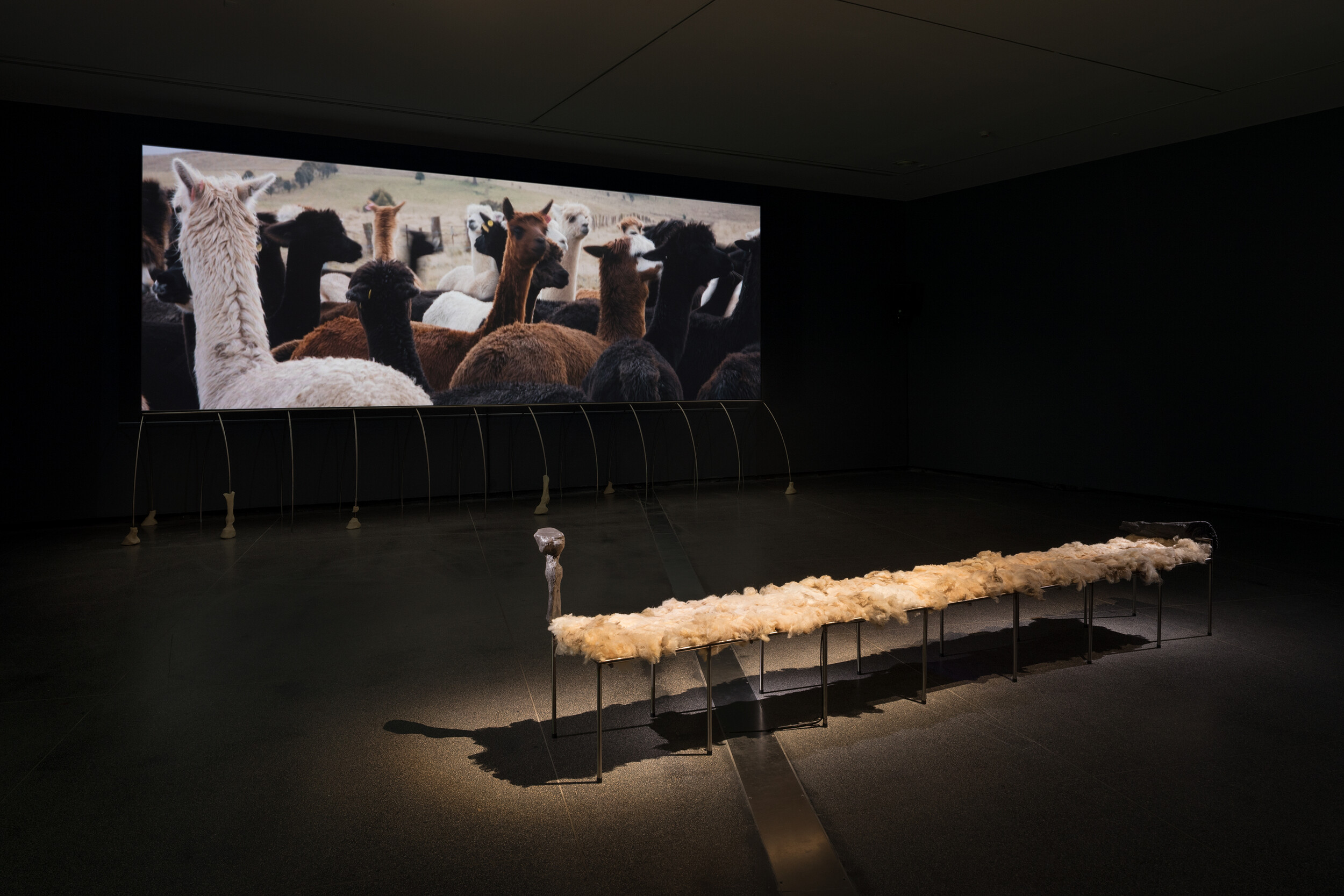
Installation view of Tina Stefanou, Field of Triggers: Centipede, 2025, Australian Centre for Contemporary Art, Melbourne. Courtesy the artists. Photograph: Andrew Curtis
Agriculture or agribusiness—materially, socially, and economically—is one of the nodes of Stefanou’s research, manifested through her working alongside horses and their riders, with tractors, sheep’s wool, and communities from towns like Kandos on Dabee Country in New South Wales to Western Australia’s Wheatbelt on Amangu Country. At ACCA, we walk into the exhibition’s following room as the filmed documentation of The Longest Hum (2022) is projected onto a large screen as part of an installation titled Field of Triggers: Centipede (2025). The screen recalls the scale of an outdoor cinema—though here it appears as if it is supported from below by twelve hooked metal legs, not unlike the teeth of a grain harvester. These legs are appendaged with cast hooves and forelegs, which also adorn the long wool-covered bench provided for the audience. The Longest Hum documents a performance directed by Stefanou, undertaken during the COVID lockdowns, in which she invited community members (dogs and alpacas included) from Kandos to join her in collectively humming while standing in the town’s main street—the result of which was also broadcast over local community radio. In the video we see people lined up outside, their mouths opening and closing to their own humming, with portable radios on porches, in living rooms, attached to bikes and fences, broadcasting the sound, alongside scenes of the local landscape—cultivated fields and post-industrial sites. This vocalisation—the hum—is described by Stefanou in an interview with the exhibition’s curator Elyse Goldfinch as “a democratic entry point to singing. It’s a way to enter social practice in a very gentle, simple way.” A non-linguistic utterance, it is also a transcultural mode of singing that transcends language barriers, and in this way sits at odds with other vocalic works in the exhibition that communicate content through their lyrics.
Unbeknownst to us reviewers, the woollen bench is equipped with a pressure-sensitive switch that one of our collective butts activates as we sit down. Like Field of Triggers: Agritemple in the previous room, there are a number of videos on rotation—however, the order in which these play here is determined by the butt-activated switch. The films Back-Breeding (2023), Hym(e)nals (2022), Miming for Mines: You Can’t Hear Faith (2022), Wake for Horses (2022), Cactus Kid (2021), and the epic, 330 minute long Dance the War of Proximity (2024) are all on display. As stated in the exhibition didactic in the foyer, Stefanou is concerned with an expanded notion of vision—a tentacular vision, to conjure Donna Haraway, who writes of tentacularity as “a modality of conceiving – an emergent practice that is necessarily speculative in being invented ‘on-the-fly.’” In this exhibition, the concept of expanded vision is explored through the grammar of film, which Stefanou stretches beyond the medium’s traditional ocularcentrism. A focus on the aural throughout the films presented, whether it be through humming, singing, and so forth, can be connected with Stefanou’s background as a vocalist—though she regards this practice as open and “undisciplined,” as in untethered to the strictures of disciplinary boundaries.
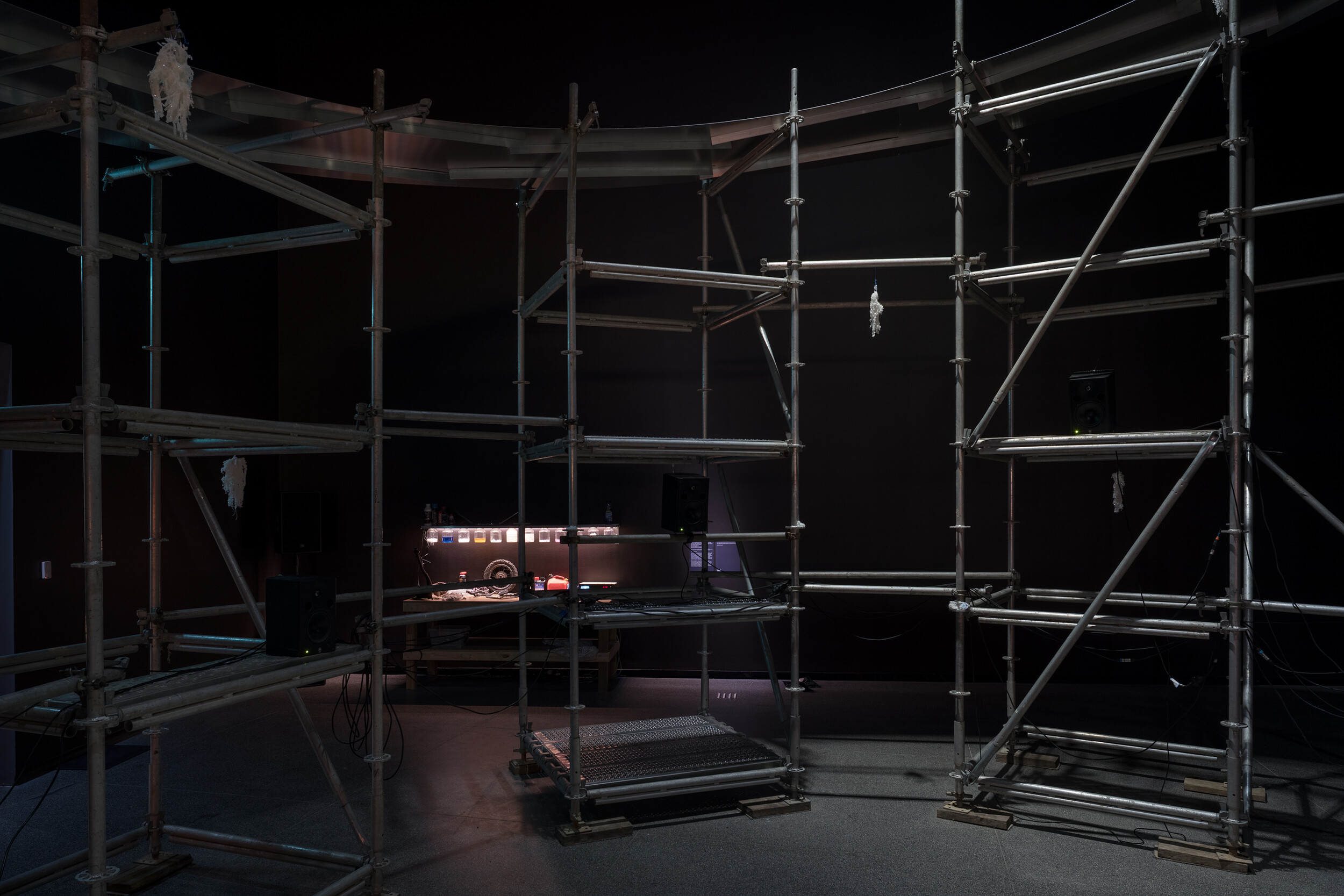
Installation view of Tina Stefanou: You Can’t See Speed, Australian Centre for Contemporary Art, Melbourne, 2025. Courtesy the artists. Photo: Andrew Curtis
Stefanou takes this undisciplined approach with regard to another thread that runs the course of You Can’t See Speed—using the format of audio descriptions, generally reserved for increasing the accessibility of exhibitions for those who are blind or have low vision, for both this purpose as well as a basis from which to develop the narration of her videos. Entering the remaining room, ACCA’s largest, we are met with Stefanou’s most ambitious sculptural assemblage of the exhibition: the towering Grief Ramp (2025)—a slick metal stunt ramp for motorcycles, which snakes up industrial scaffolding towards the ceiling, where at its precipice a crystal-encrusted length of fabric cascades to the floor. The bars of the scaffolding are adorned with similarly crystallised evil-eye talismans—known in Greek as kako mati—and more plaster-cast hooves. From within the curve of the ramp, we watch the eponymous film—made by Stefanou in collaboration with Matthew Cassar, a motorcycle rider who became blind in his thirties.
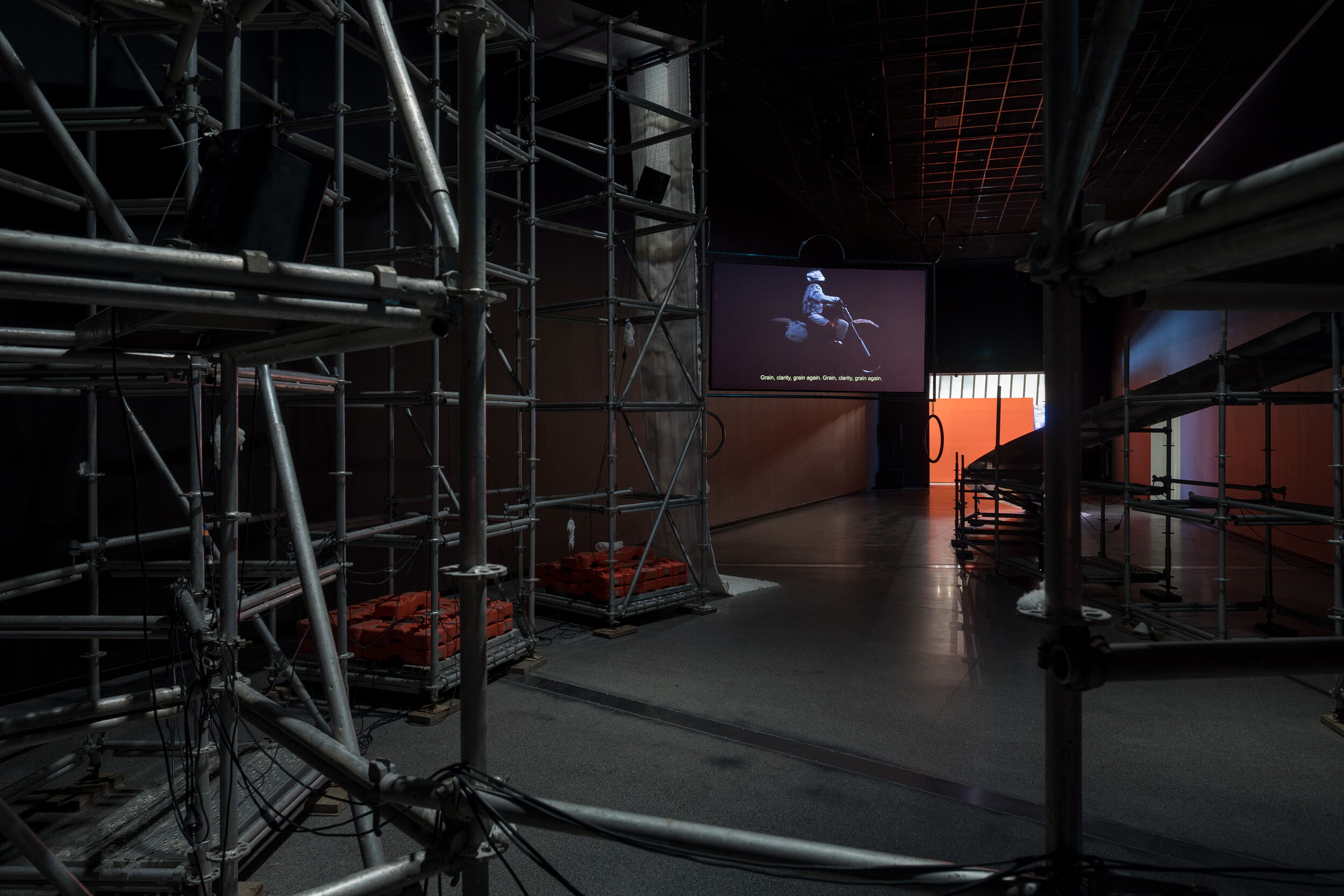
Installation view of Tina Stefanou: You Can’t See Speed, Australian Centre for Contemporary Art, Melbourne, 2025. Courtesy the artists. Photo: Andrew Curtis
Hidden strategically within the scaffolding is a network of eight speakers, accompanied by additional speakers that blast audio connected to the video. It requires timing and patience to catch the moments in the film that show Cassar in various scenes in the workshop surreally polishes his dirt bike and cleans oily pearl-like balls—each placed into a small jar. And in ACCA’s notoriously bombinating expanse, Stefanou’s ambitious sonic architecture reverberates. Polyphonic choral voices, sonorous flugelhorns, the braaaps of Cassar’s dirt bike revs—all play from the aptly-branded Yamaha-sponsored high-fidelity speakers in the almost-religious Hymn to the Dirt Bike Rider. And so, we depart: no longer a mass of eyes and bodies parsing form, but a swarm of humming ears.
This review was written by art writing and criticism students alongside Amy May Stuart and Chelsea Hopper. Special mention is made of Nicolette Akras, Alexandra Banning-Taylor, Erin Barwood, Kimberly Condon, Lucy Cameron, Stella Eaton, Iwan Kaye, Anisha Muniandy, Daisy Perley, Caitlyn Pertzel, Emme Southey, Georgia Vaneslow, Malini Waiwitwuthiwong, Indiana Wells, Romy Walys, Sam Kiley, Grace Hall.
